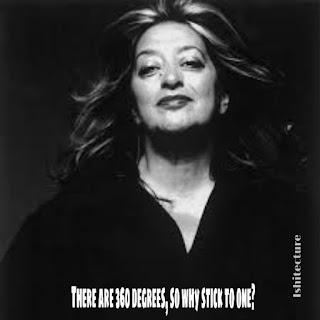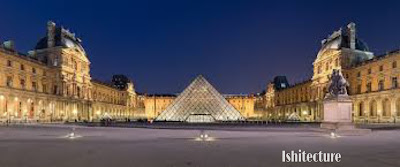Dame
Zaha Mohammad Hadid was a British-Iraqi architect born on 31st October 1950 in
Baghdad, Iraq. She grew up in Baghdad’s first Bauhaus inspired buildings and
became the founder of the leading Zaha Hadid Architects which has designed over
950 projects in 44 different countries. She was also talented in painting,
graphic arts, 3D models and computer designs.
EDUCATION: Alma Mater- American University of Beirut and
Architectural Association School of Architecture. She read Mathematics at The American University of Beirut before moving to study at the Architectural
Association School of Architecture in London, where she met Rem Koolhas, Elia
Zenghelis and Bernard Tschumi. Then she worked for her former professors, Koolhaas
and Zenghelis, at the Office for Metropolitan Architecture, in Rotterdam, The Netherlands of which she became a partner in 1977.
Zaha
Hadid became the first woman to be awarded Pritzker Architecture Prize in 2004,
for her internationally known theoretical and academic work. Her dynamic and
innovative projects are built on 30 years of revolutionary experimentation and
research in urbanism, architecture and design. Her work tests the boundaries of
architecture and design by using the concept of deconstructivism and
fluidity.
ARCHITECTURE
PHILOSOPHY: The first building
designed by her is the Fire Station near the German-Swiss border for furniture
company Vitra, which contains numerous irregular angles. Her concepts were
based on deconstructivism, concepts of fluidity, gravity-defying structures,
fragmentation and revolutionary buildings, Her designs were always ahead of
time and responsive to emerging social demands. There was always a conflict
between her artistic ego and public spirit, which is what made her interesting.
ARCHITECTURAL STYLE: Hadid’s style was inspired by the theory of deconstructivism, which is a development of the post-modern architecture that began in the late 1980s. The characteristic feature was fragmentation, which manipulated the structure’s surface and skin into non-rectilinear shapes to appear as distort and dislocated elements of architecture. Her style was to break architecture, displace and distort it, leaving the horizontal and vertical planes, creating sharp angles and chaotic approach, for the buildings to appear to have no visual logic and disharmonious abstract forms.
Some of her most renowned works are given below:








Comments
Post a Comment